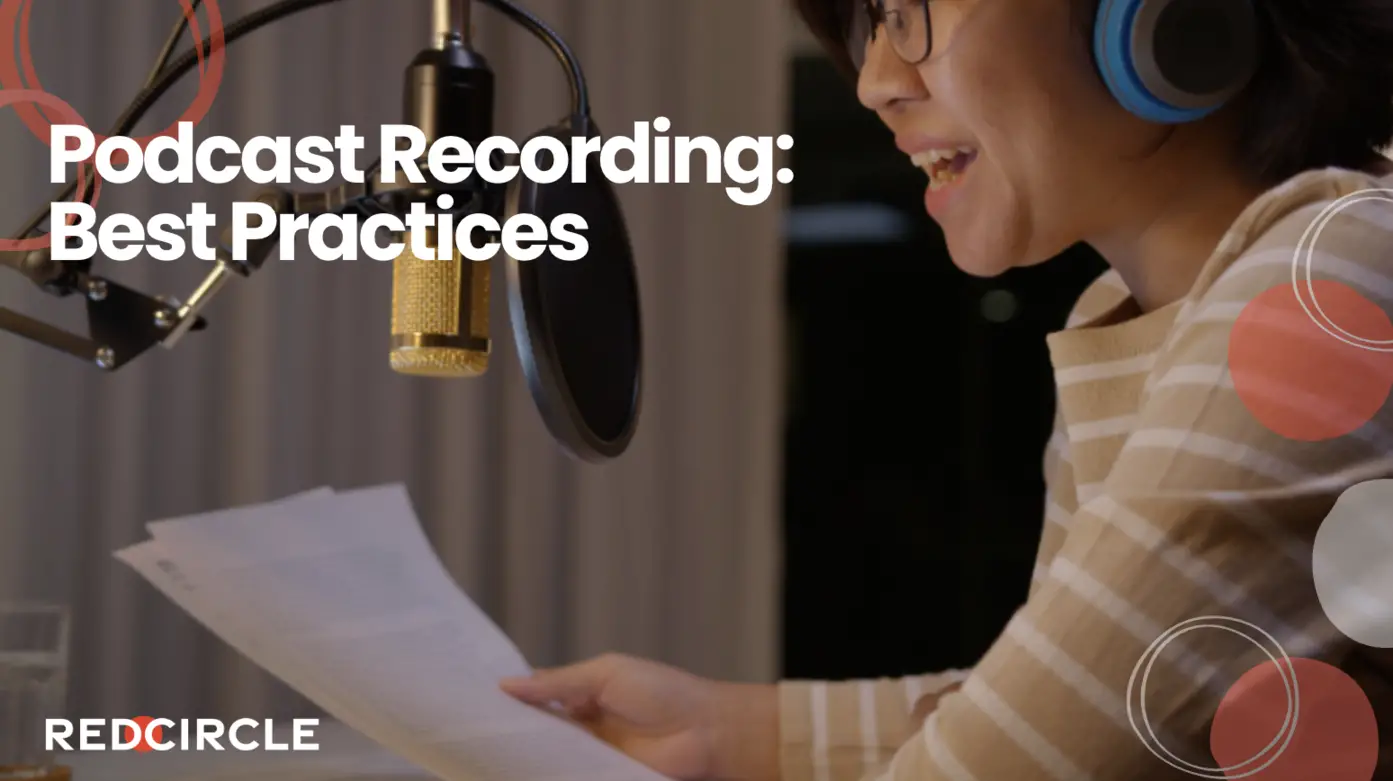You’ve planned out your podcast, figured out your topic and your cadence, and are ready to start recording! But before you jump in head first, check out these tips on how to make your podcast sound absolutely incredible (with just a bit of effort!)
The Equipment
Starting a podcast can be as easy as picking up your phone and pressing ‘record’. But there are a few ways you can elevate your audio with the right equipment. For bare basics, a dedicated microphone, laptop, and recording software can turn your audio from amateur to professional.
If you’d like to go even further, then these audio accessories can help:
- Pop Filters & Windscreens: These relatively inexpensive and often clip-on devices help to reduce unwanted harsh sounds from your voice. They sit in front, or completely cover, your microphone and filter out the harsher sounds like the p’s and t’s in your speech.
- Mic Stands: You’d be surprised just how tiring it can be holding up a microphone to your face! Investing in a microphone stand can help reduce shifting background noises and tired arms.
- Headphones: An easy way to monitor sound levels for your audience is to pop on a reliable set of headphones. Listen while you record so you know just how to adjust your audio levels. It can also help the more distractible stay on task instead of wondering what the birds are chattering about right outside the window.
See all of our recommendations, from beginner to professional, in our Equipment Blog Post.
The Space
The place where you record your podcast is just as important as the equipment used to record it. You want to find somewhere quiet and comfortable so you feel at ease when you launch into your episode for the day.
A good number of our podcasters even utilize spaces like their closets to record! But if you’re low on space, you can always check out local places like libraries and universities which sometimes offer recording booths.
Whichever you choose, you also want to make sure that the space is somewhat “sound-treated”. Meaning sound doesn’t easily leak through from the outside. This can be done with things as simple as rugs, blankets, or even your own wardrobe! Of course, you can also use more professional materials like acoustic foam tiles to soak up unwanted noise.
Looking for more tips on creating or finding the perfect recording space? Check out our Home Studio Blog!
The Host
There are a surprising amount of things hosts themselves can easily do to improve the audio of their podcast without needing to invest in technology. It’s all about positioning and keeping mindful!
- Get Closer to the Mic: The closer you sit to your microphone, the better it can pick up your voice (and not the neighbor’s dog!) A good rule of thumb is to ensure that your podcast mic is about a hand’s length away from your mouth.
- Sit Still: This can be a tough one for many folks, especially if they like to pace when speaking or are simply an energetic speaker. Moving around too much can cause all that extraneous noise to be picked up by your microphone. Noise can even extend to your jacket swishing too loudly or your fingers smacking the keyboard. Be mindful of the noises you’re making so you can create a pleasant listening experience.
- Drink Some Water: Not only for your health but to keep your vocal cords lubricated. Ensuring that you’re well-hydrated can reduce the dry-clicking noises that might occur in your speech. It’s best to hydrate right before recording! But you can also take a swig away from the microphone and edit out any accidental noises in post.
Still struggling to find the perfect host for your podcast? Why not try out RedCircle? We offer a 7-day Free Trial for any of our paid plans as well as a totally free option!




One thought on “Best Practices for Recording a Podcast”
Comments are closed.